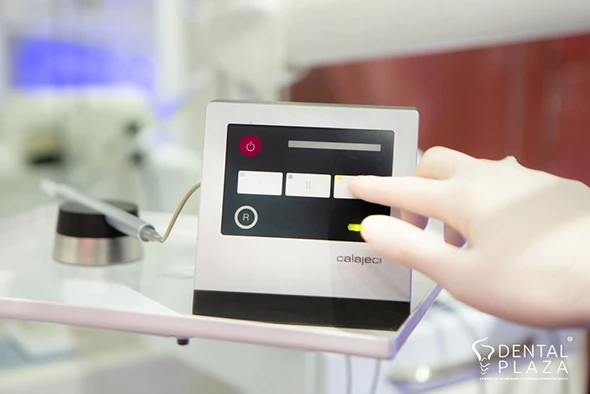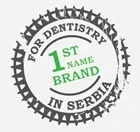Do not be shy, show your teeth!
Call Center 08-21h
Do not be shy, show your teeth!
Call Center 08-21h
.webp)
For a large number of patients, local anesthesia is the most uncomfortable part of the dentist's treatment.
Pain in the course of local anesthesia occurs when the needle penetrates deeply and impairs the surrounding tissue. It may last even after the anesthesia has ceased. This applies particularly to the lower jaw where a longer needle is used. When the anesthetic is injected into the tissue, pressure increases in it and pain occurs. That's why in our clinic we use the most modern system for providing local anesthesia that does not cause pain. This new technology is very popular in patients with a phobia of injection.
The first in Serbia, we present our patients an innovative solution for a painless visit to the dentist, COMPUTERIZED ANALYSIS CALAJECT.
What is CALAJECT?
Calaject is basically a computer controlled injection. It serves to provide completely PAINLESS, safe and effective administration of local anesthetics while performing all routine dental procedures including: tooth repair, nerve removal, grinding for crochets, etc.
Injections of anesthetics is controlled by the computer, so the injection is slow, constant and COMFORT. By measuring the resistance in the tissue of the injection fluid, the computer calculates the correct position of the thin needle and is warned by the therapist. Before contact with the tissue, the instrument ejects a few drops to anesthetize the tissue prior to contacting with a thin needle, and the patient is provided with a maximum comfortable and relaxed treatment.

Where is anesthesia applied?
The system is specially designed to provide anesthesia for a single tooth by injecting anesthetics into a thin space between the teeth and the gums surrounding it. The procedure is carried out WITHOUT PAIN, VERY EFFICIENT, AND WITHOUT THE FEELING OF DUMNESS OF LIPS AND TONGUE. After classical local anesthesia, it took hours and hours for numbness to pass of the lips and to allow the patient to continue working or consuming food. Until now, no conventional technique of providing local anesthesia in dentistry has not been able to provide such comfort for the patient, and for therapist sufficiently strong anesthesia to carry out an intervention without pain.
What are the advantages comparing to a classic needle and a syringe?

Do you have questions?
.webp)
For a large number of patients, local anesthesia is the most uncomfortable part of the dentist's treatment.
Pain in the course of local anesthesia occurs when the needle penetrates deeply and impairs the surrounding tissue. It may last even after the anesthesia has ceased. This applies particularly to the lower jaw where a longer needle is used. When the anesthetic is injected into the tissue, pressure increases in it and pain occurs. That's why in our clinic we use the most modern system for providing local anesthesia that does not cause pain. This new technology is very popular in patients with a phobia of injection.
The first in Serbia, we present our patients an innovative solution for a painless visit to the dentist, COMPUTERIZED ANALYSIS CALAJECT.
What is CALAJECT?
Calaject is basically a computer controlled injection. It serves to provide completely PAINLESS, safe and effective administration of local anesthetics while performing all routine dental procedures including: tooth repair, nerve removal, grinding for crochets, etc.
Injections of anesthetics is controlled by the computer, so the injection is slow, constant and COMFORT. By measuring the resistance in the tissue of the injection fluid, the computer calculates the correct position of the thin needle and is warned by the therapist. Before contact with the tissue, the instrument ejects a few drops to anesthetize the tissue prior to contacting with a thin needle, and the patient is provided with a maximum comfortable and relaxed treatment.

Where is anesthesia applied?
The system is specially designed to provide anesthesia for a single tooth by injecting anesthetics into a thin space between the teeth and the gums surrounding it. The procedure is carried out WITHOUT PAIN, VERY EFFICIENT, AND WITHOUT THE FEELING OF DUMNESS OF LIPS AND TONGUE. After classical local anesthesia, it took hours and hours for numbness to pass of the lips and to allow the patient to continue working or consuming food. Until now, no conventional technique of providing local anesthesia in dentistry has not been able to provide such comfort for the patient, and for therapist sufficiently strong anesthesia to carry out an intervention without pain.
What are the advantages comparing to a classic needle and a syringe?
